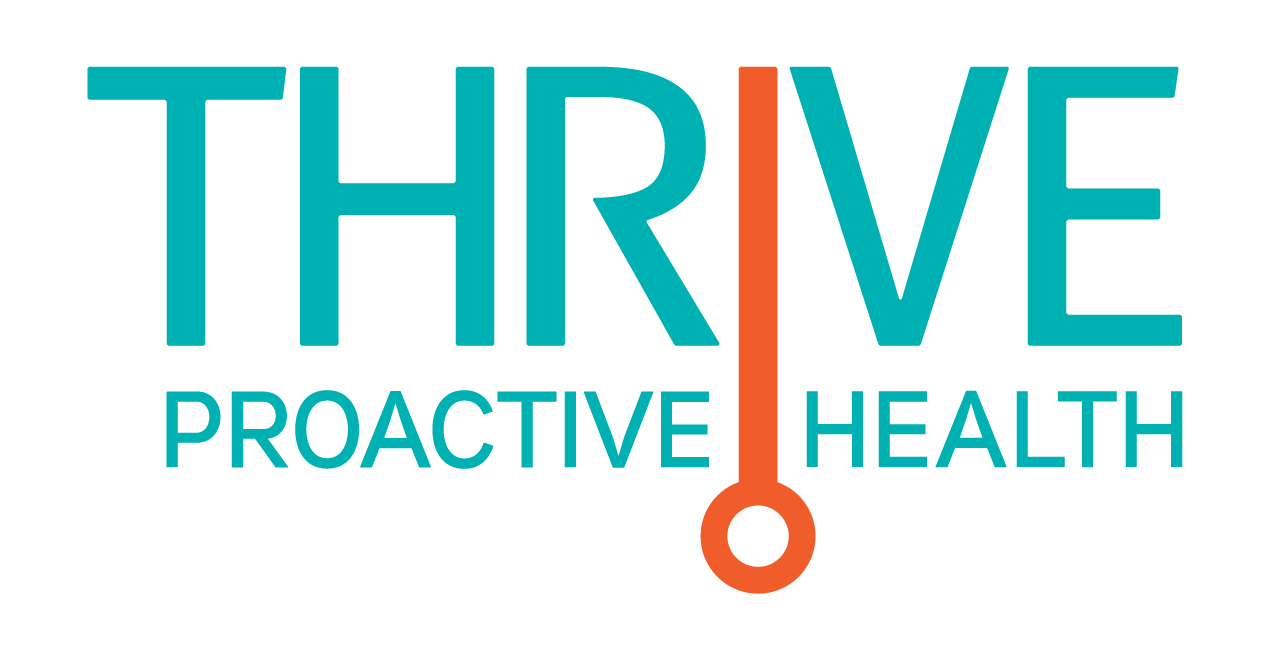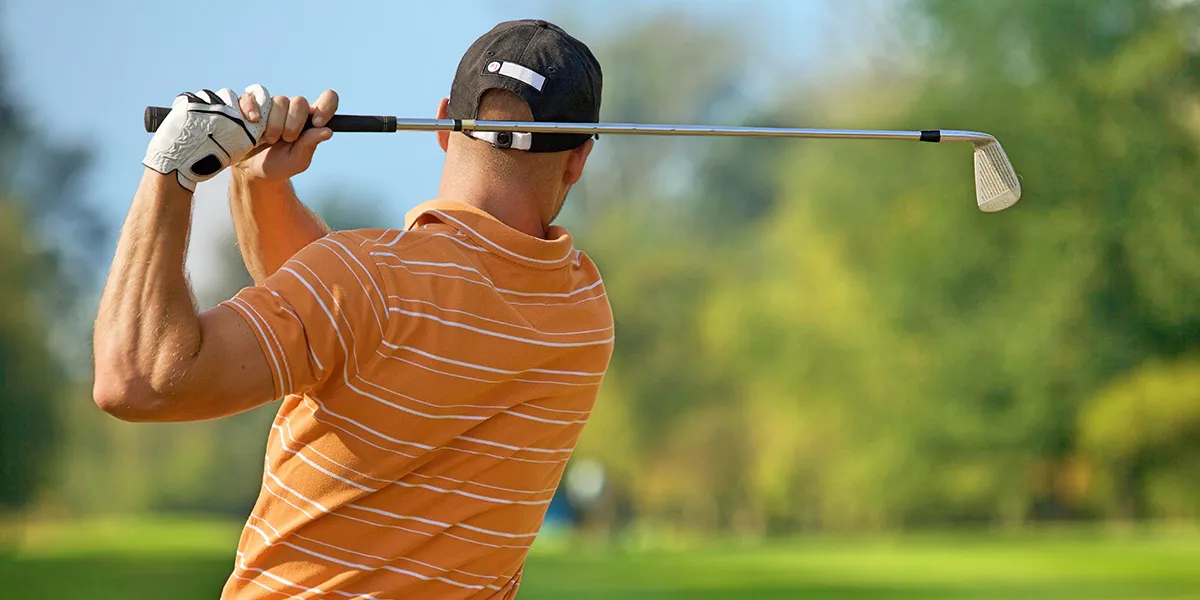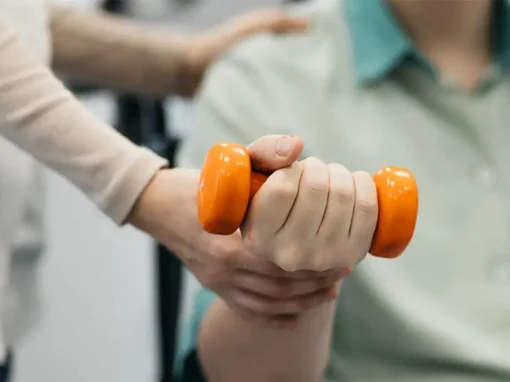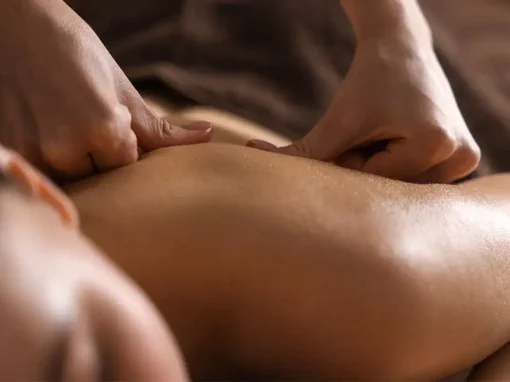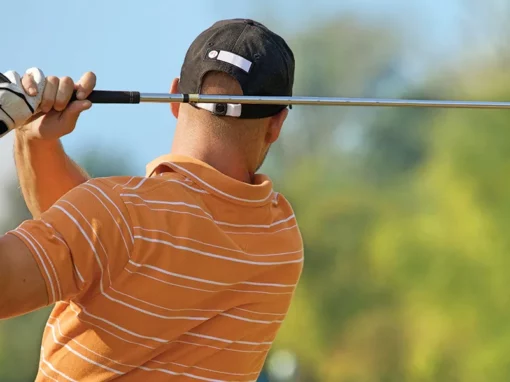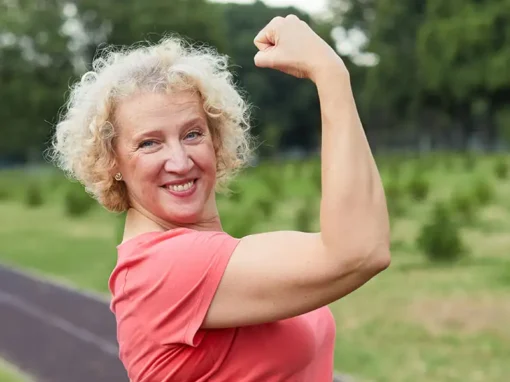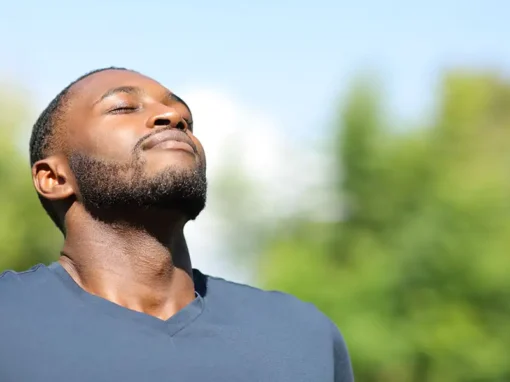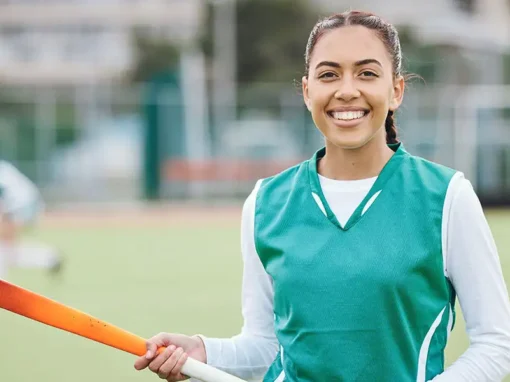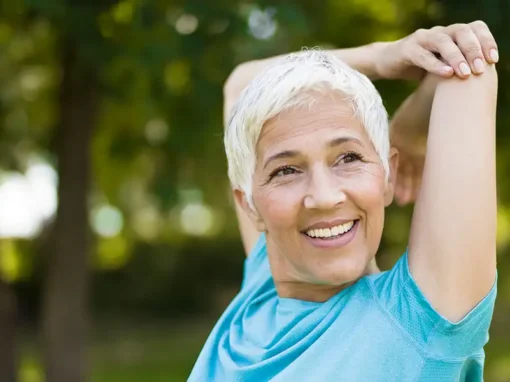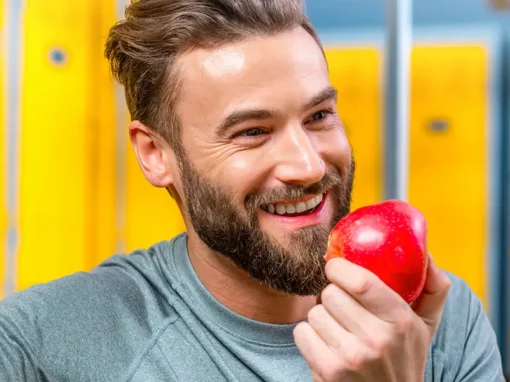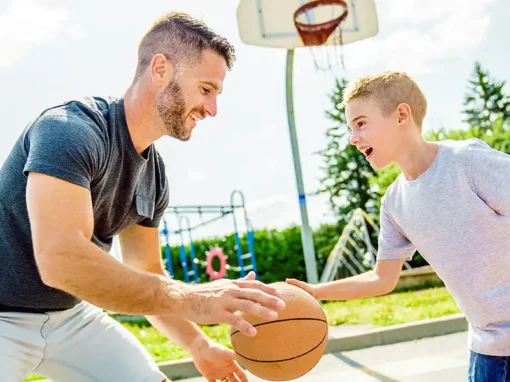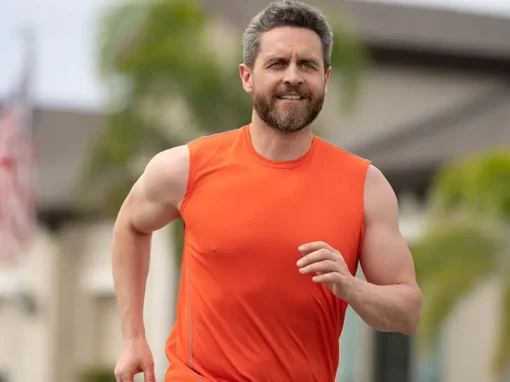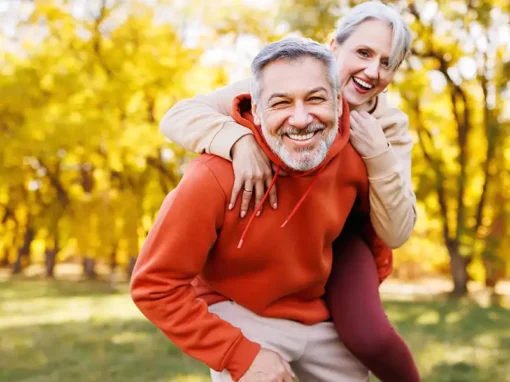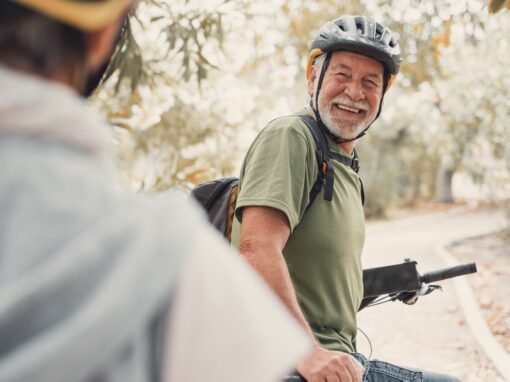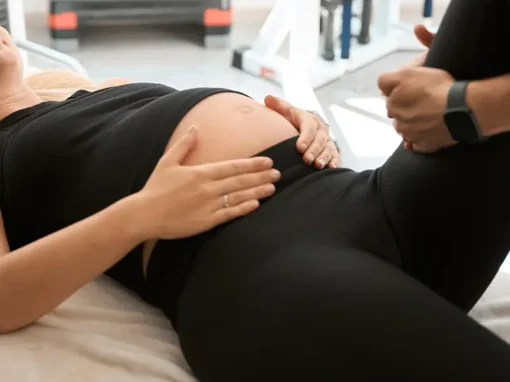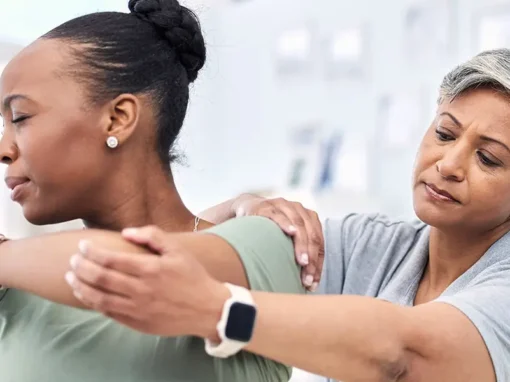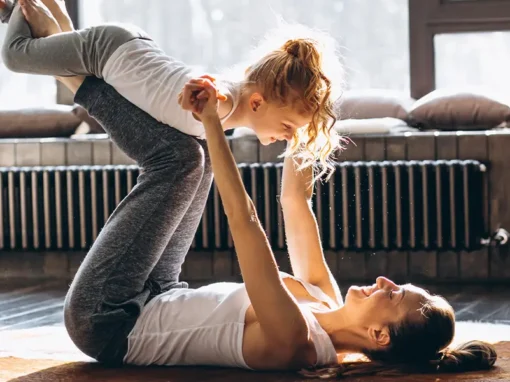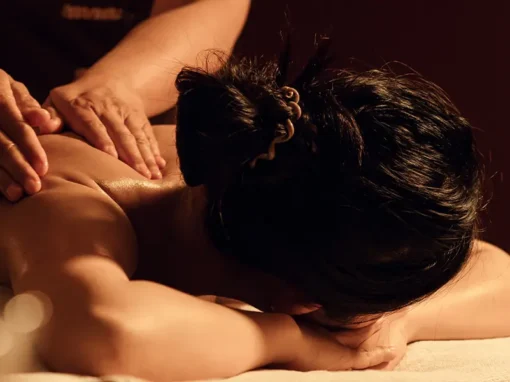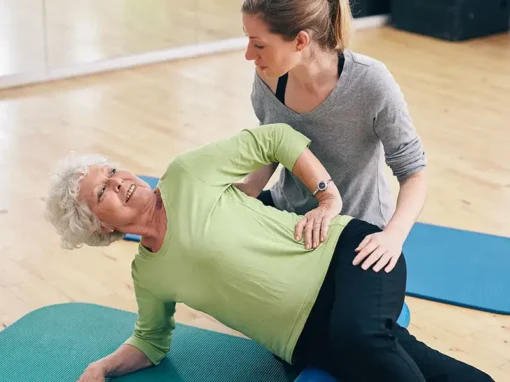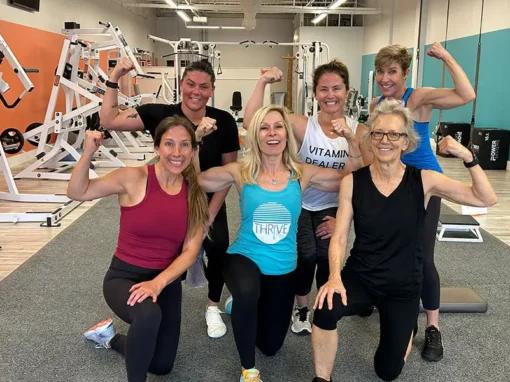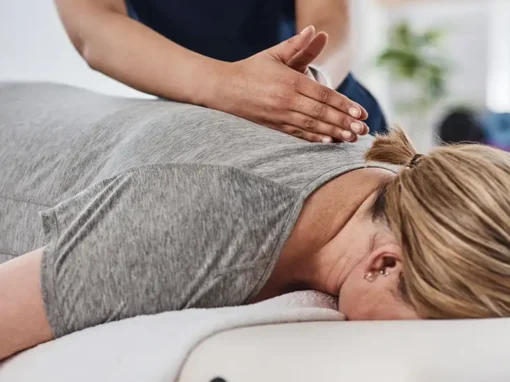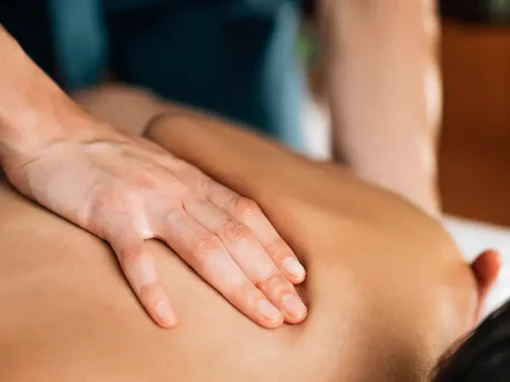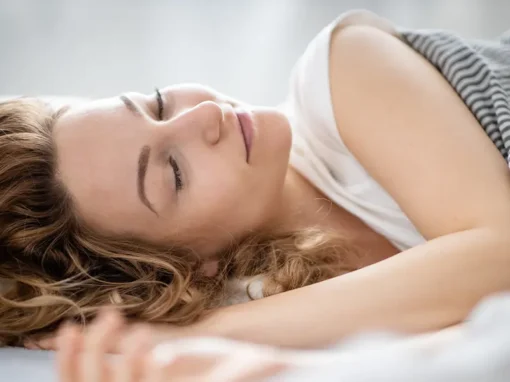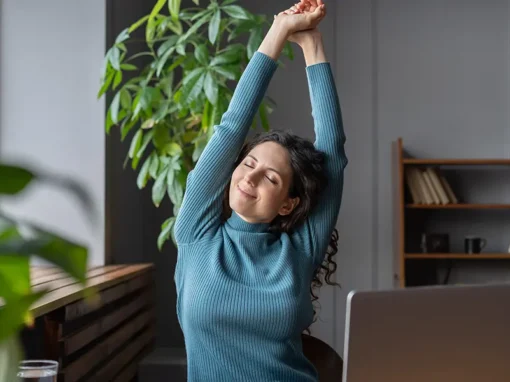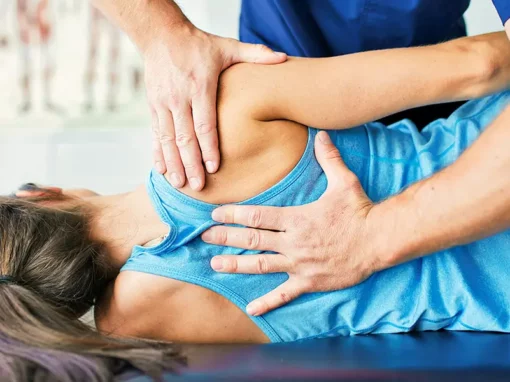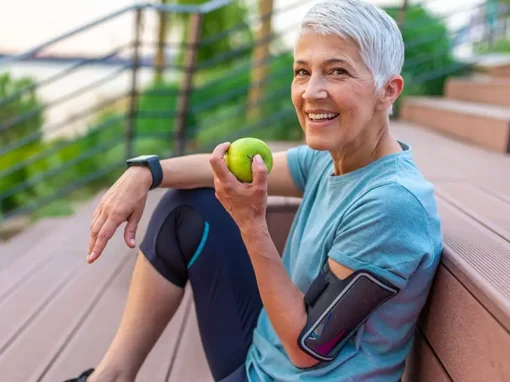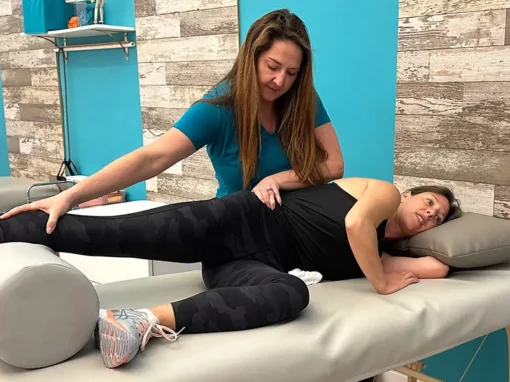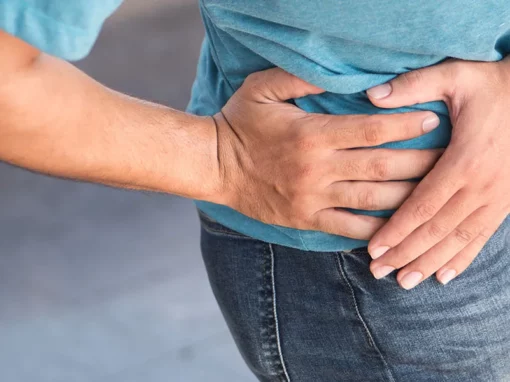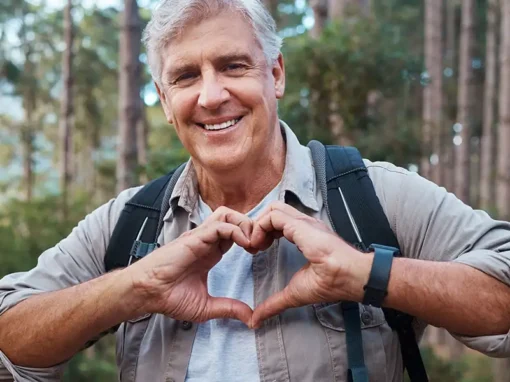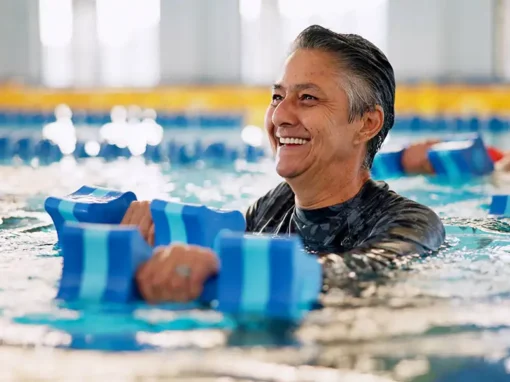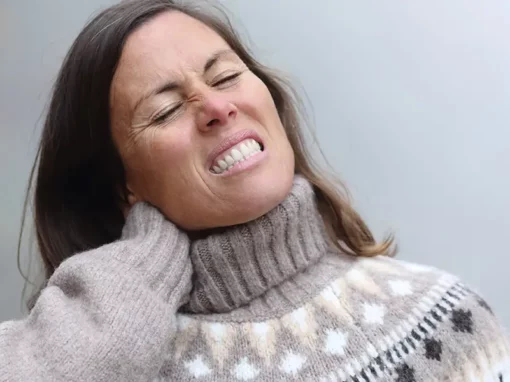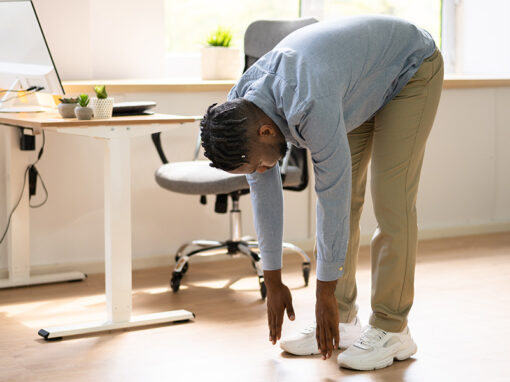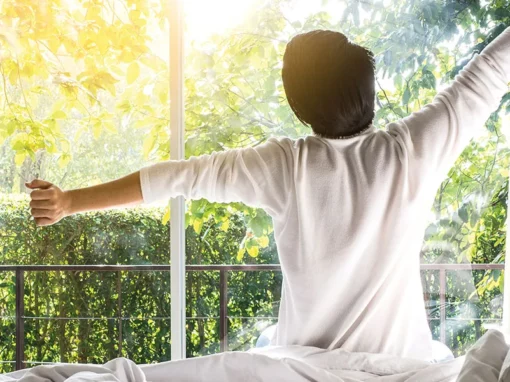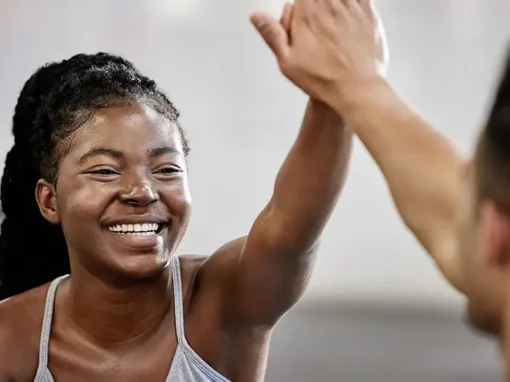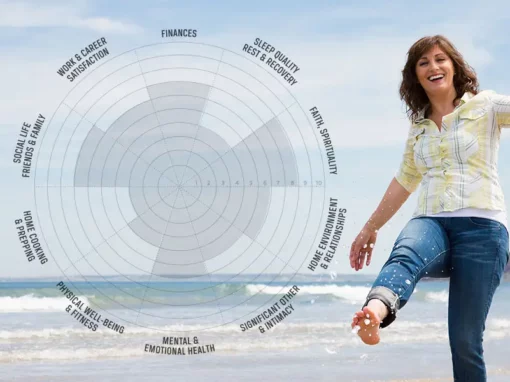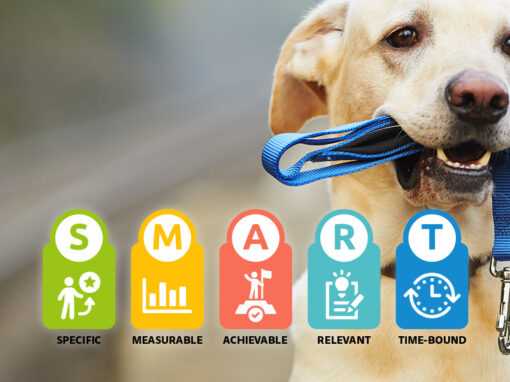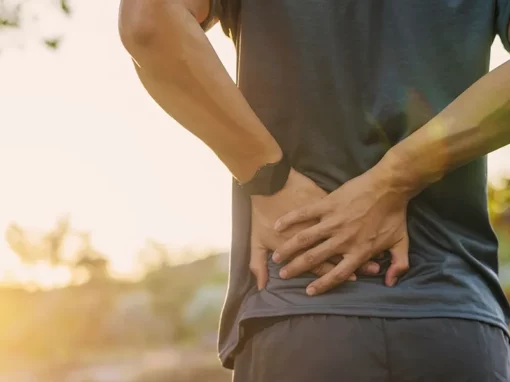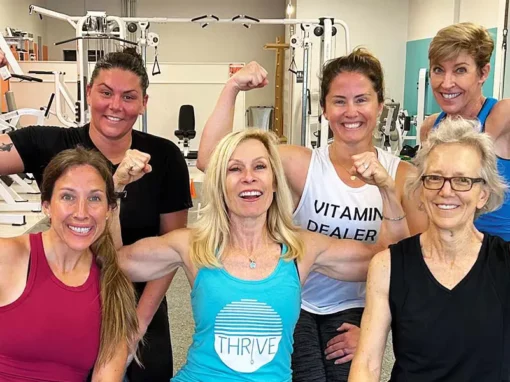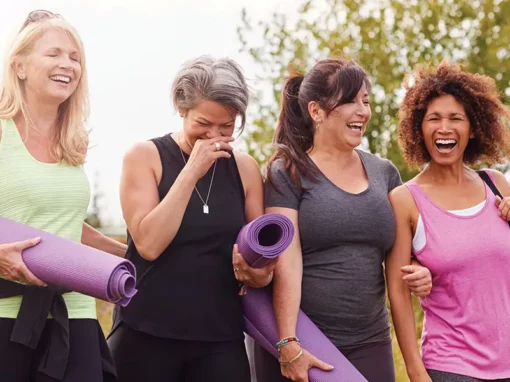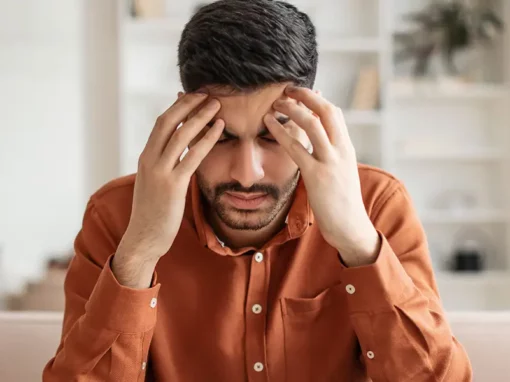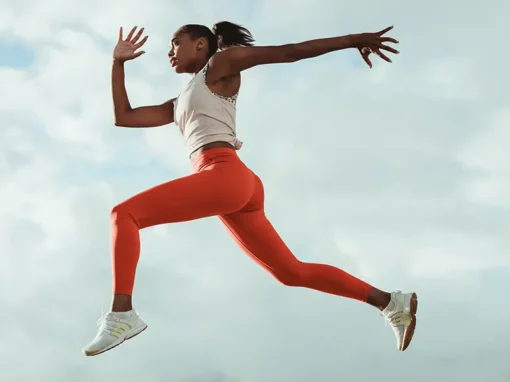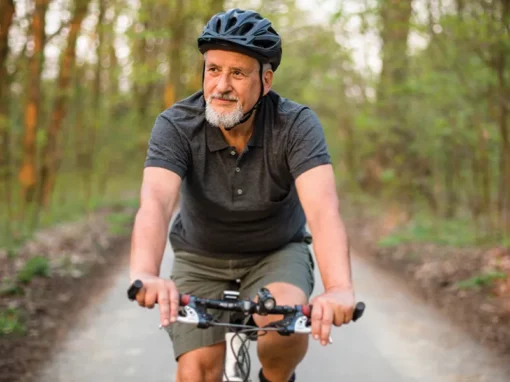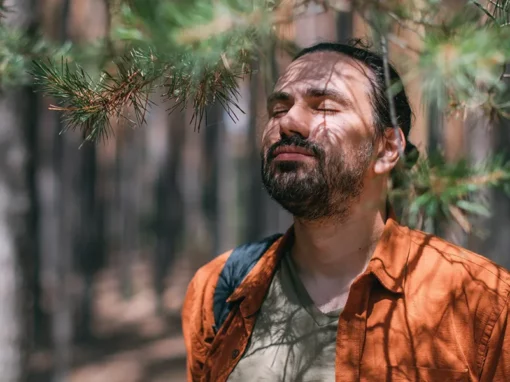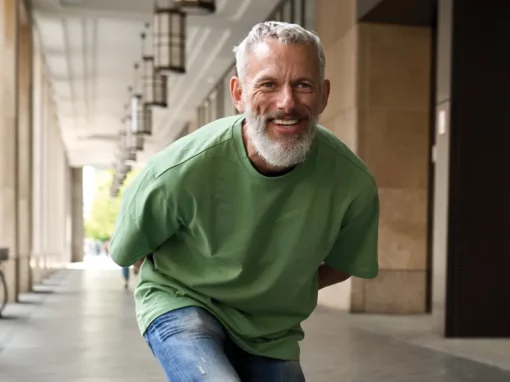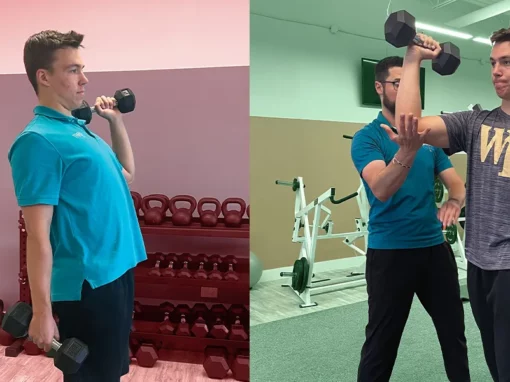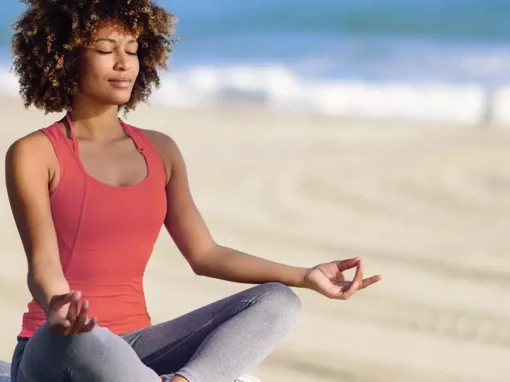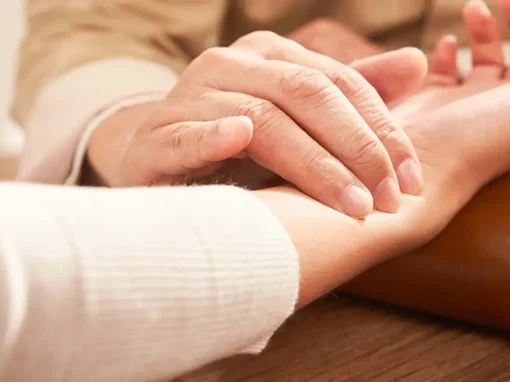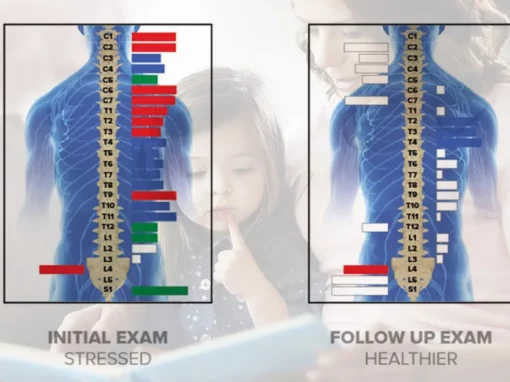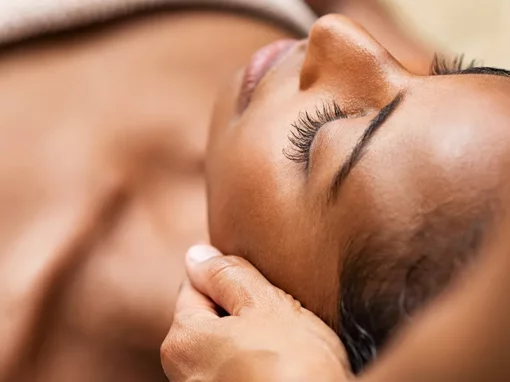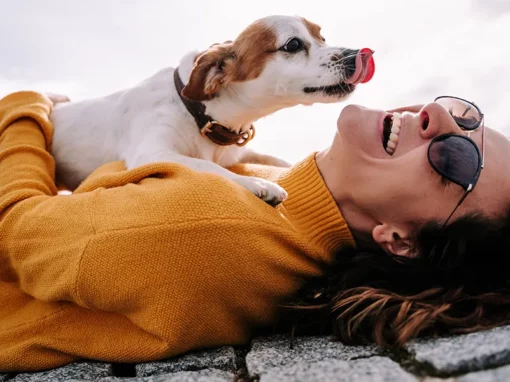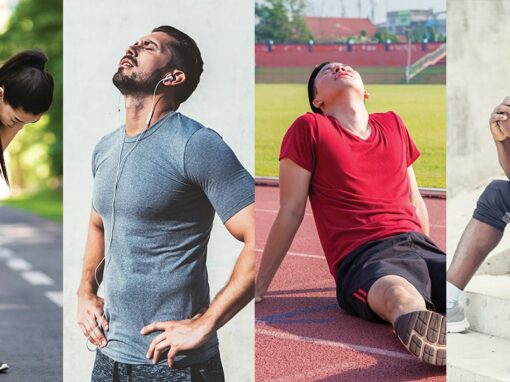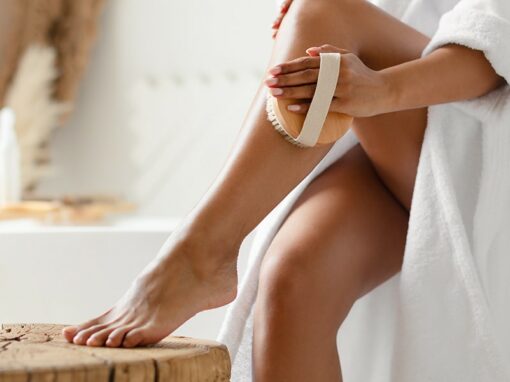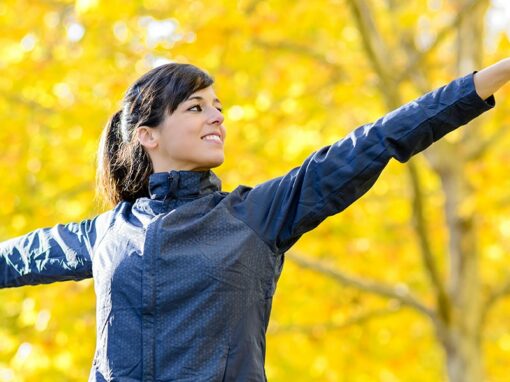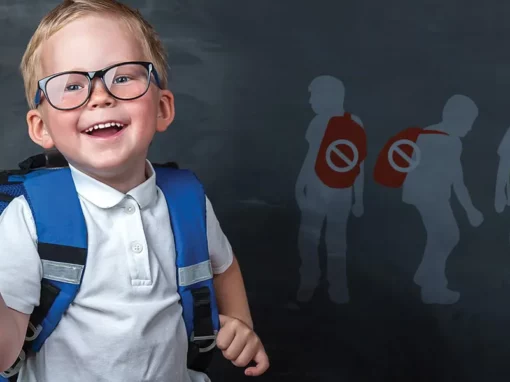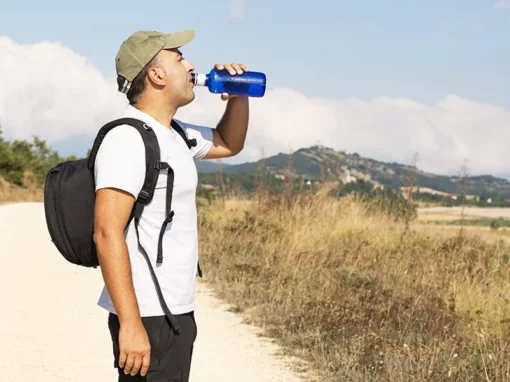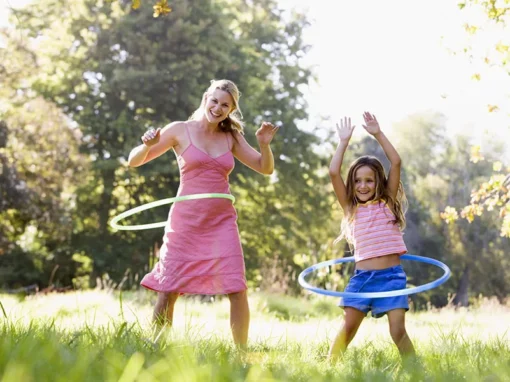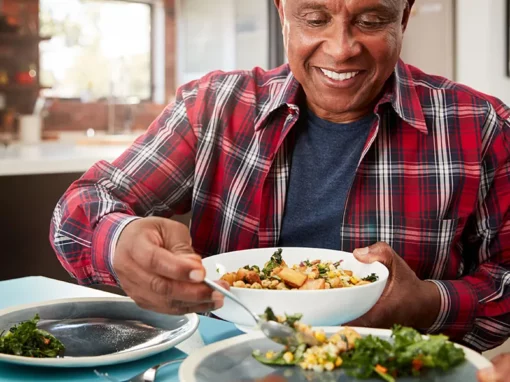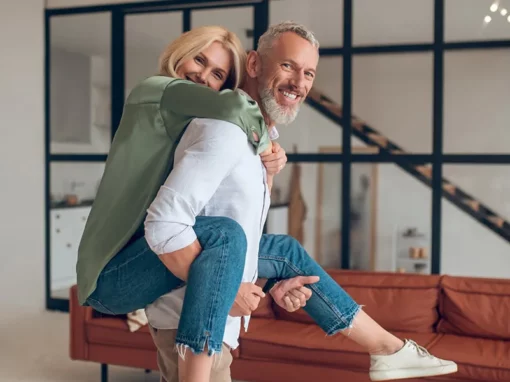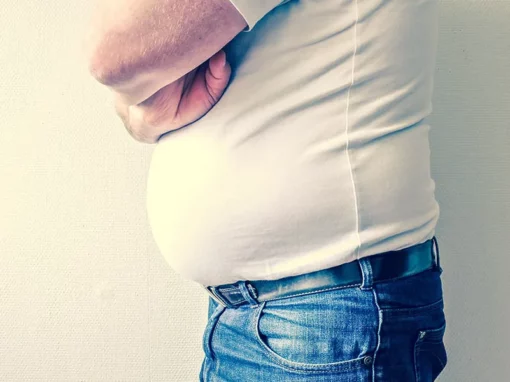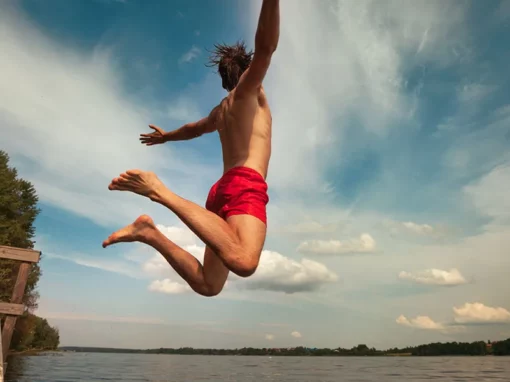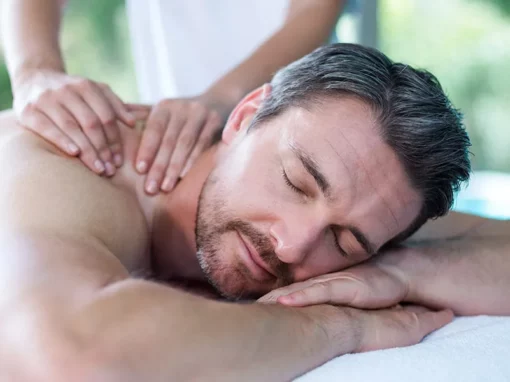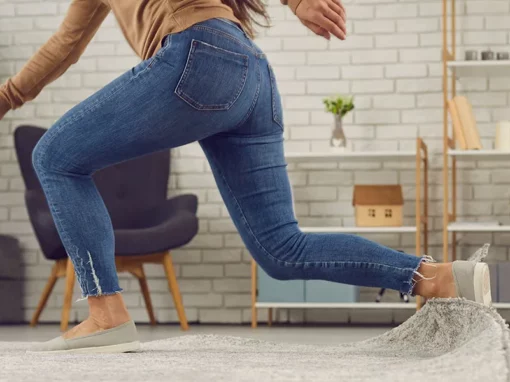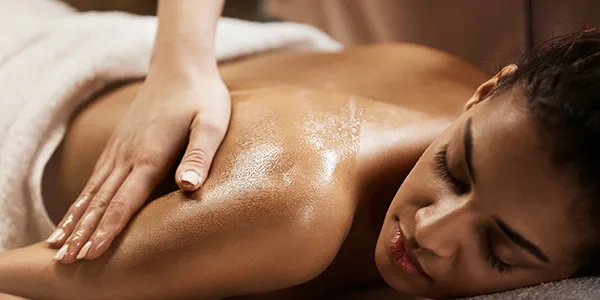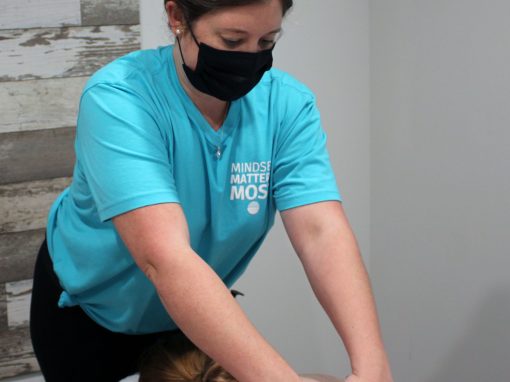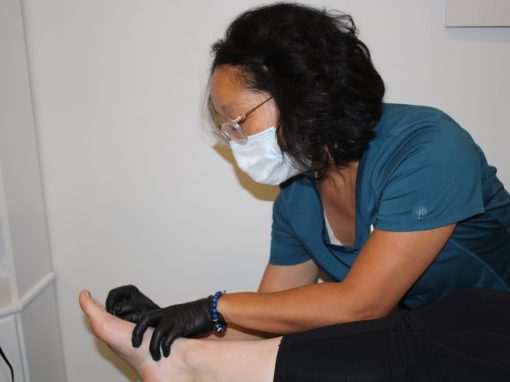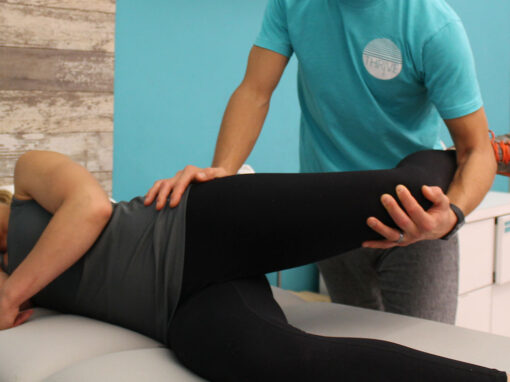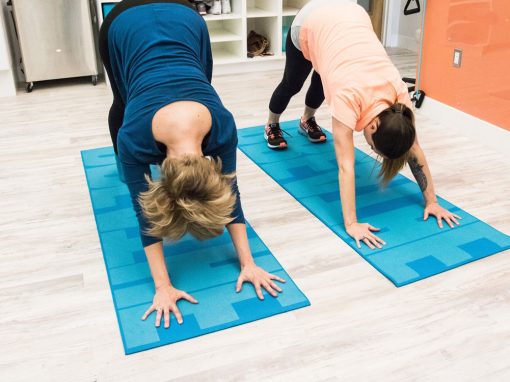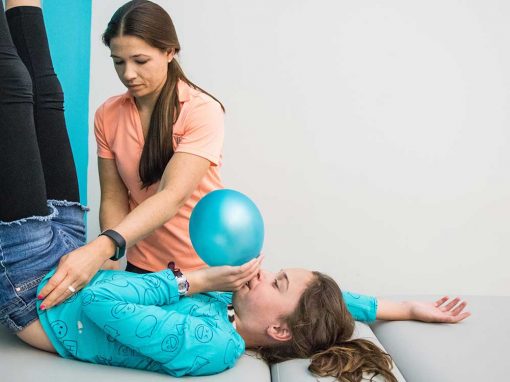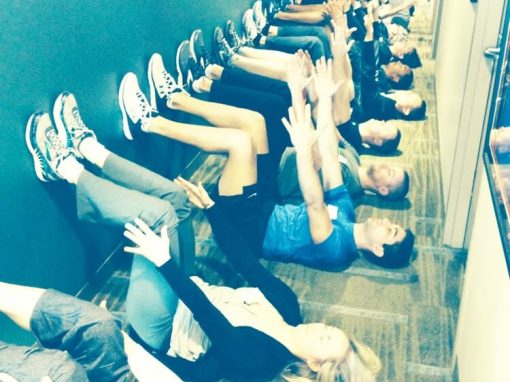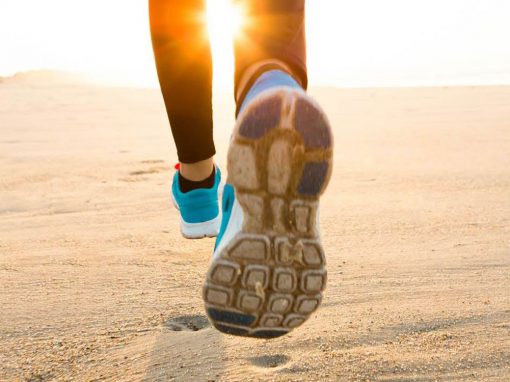If you’re looking to optimize your golf game, you’ll need to address some key mechanics. Golf is a mechanically complex rotational sport and we see so many people train and “stretch” for rotation in ineffective ways.
To be effective, you have to first understand that optimal rotation in golf requires movement through your pelvis and hips as well as through your ribcage…
Your arm movement requires rotational mobility in your trunk to allow your shoulders to separate from your hips. This separation occurs through the lower half of your rib cage. See Mechanics Tip #1.
Your pelvic movement requires your pelvis to rotate over your hips and feet. Which means as your trunk rotates through your swing, one half of your pelvis comes forward while you allow the opposite half of your pelvis to shift backwards.
See Mechanics Tip #2.
Key Mechanics Tip #1 – Keep Your Ribcage Mobile
Even though this body part includes the word “cage,” your rib cage is designed to be mobile and dynamic. Its configuration allows each level to spring and rotate much like the movement of window shutters or an accordion. Tight muscles around your neck, shoulders, chest, and lower back will cause your rib cage to stiffen and lock up. The tighter those muscle groups, the more your ribs will lift and begin to restrict your spine’s ability to flex and rotate. Not so good for golf!
This is why you must keep your rib cage mobile and unlocked. When your rib cage is unlocked and aligned properly stacked over your pelvis and hips, you have a better start posture for the shoulders to separate from your hips without strainful effects on the lower spine or sacroiliac joints.
The quickest way to accomplish this is through deep core work using resisted breathing drills to train your rib cage to slide down on your exhalation using your abdominals.
Learn to feel your abdominals guide the ribs down on your exhalation. Maximize your exhale, then pause to feel and sense your abdominals. Keep your core lightly engaged on your subsequent inhale as you allow your inhaled air to expand your rib cage. Do not forcefully brace or lock down the ribs.
Ab bracing is an ineffective way to train a golfer’s core because the midsection must remain dynamic, resilient and mobile, not braced and rigid.
The abdominals wrap around your core at varying angles because of how your core was designed to rotate. Always remember, your abdominals were mechanically designed to support your rib cage and the mechanical respiratory movements first, and it is through that support that they support the spine and other body parts for rotation, athletic ability, and power.
Try these two moves to keep your deep abdominals active and your rib cage mobile:
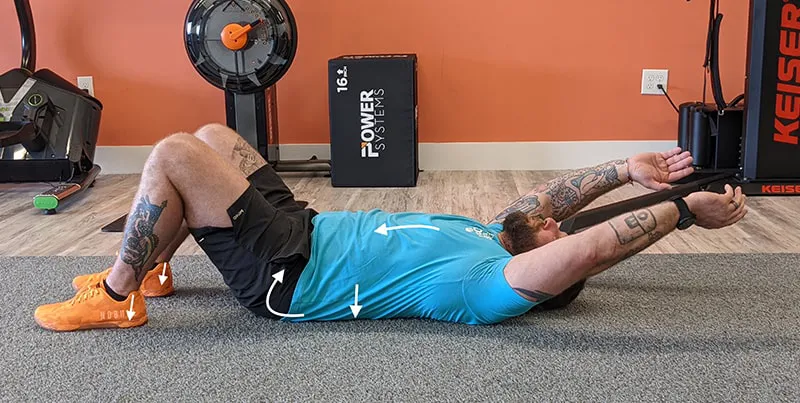
Lower Rib Cage Abdominals
- Lie on your back, knees bent, feet flat on the floor.
- Keep your feet flat at all times, pushing down to ground them.
- Maximize your exhalation to depress your ribs down toward your belt line as you rock your pelvis back to flatten your lower back to the floor.
- Hold this position for five breath cycles as you reach your arms overhead.
- Continue to feel more abdominal muscles activate with each exhale and do not let those abs go as your inhale!
Repeat for five sets.
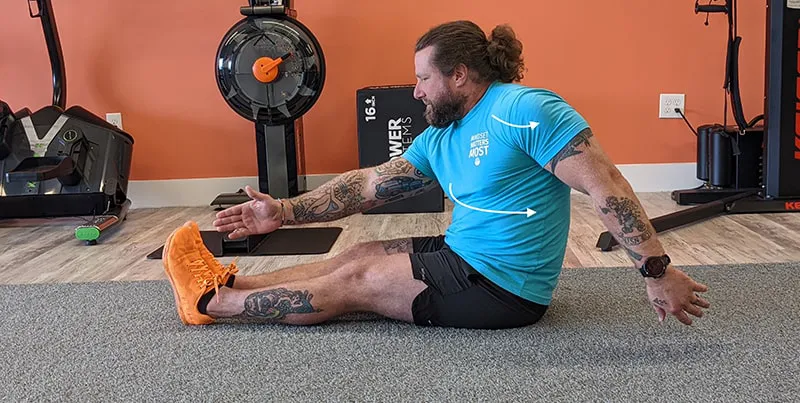
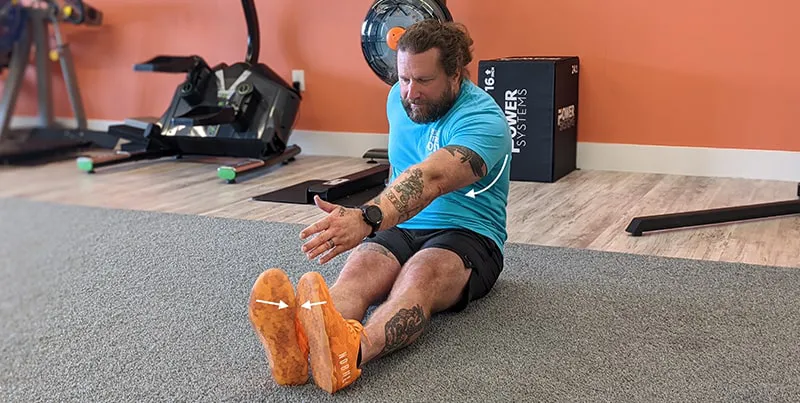
Long Seated Trunk Rotation
- Sit upright on the floor with your legs straight out in front of you. Hold your knees and feet together, and grow taller, but be sure not to over posture or arch your lower back too much; stay tall through your center.
- Reach your right arm towards your left pinky toe as you pull the left arm back. Feel your right shoulder blade stretch around and away from your spine, as you feel your left shoulder blade squeeze toward your spine.
- As you reach, you should be rotating through your trunk and lower rib cage. Lots of things are stretching here so you may feel lots of different things, but you shouldn’t feel pain.
- Hold the right-arm reach for five breath cycles, trying to reach a tad bit forward on each exhalation, and feeling the rib cage expansion on your subsequent inhalations.
- After you complete five breaths, rotate and do the same thing the opposite way with your left arm reaching for your right pinky toe. Repeat reaching each way two to three times. If one side feels more restricted than the other, do an extra set on that side.
Key Mechanics Tip #2 – Master Your Left-hip Shift
For right-handed golfers, this is a very important mechanical element for proper follow through in your golf swing. Without adequate mobility to shift your left pelvis backwards, you will lose power or top the ball and lift your body up too early. The right half of your pelvis needs to move forward, as the left half of your pelvis moves backwards to properly get your hips to rotate and follow through to finish your golf swing.
Try these two moves to work on your hip rotation and follow through:
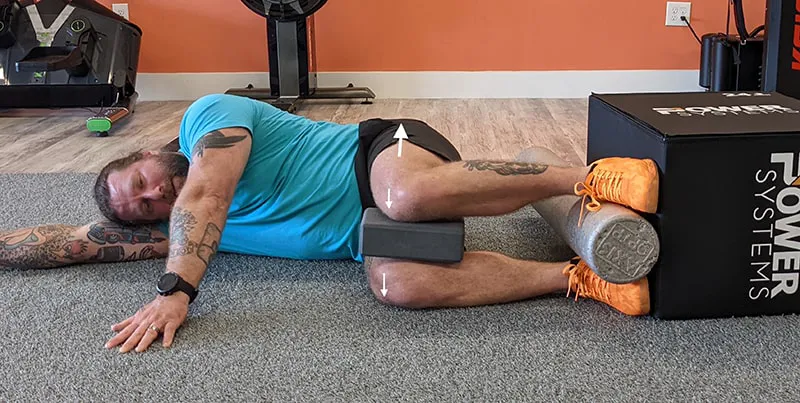
Scissor-slides, Left-pelvic Shift
- Lie on your right side with your knees and hips bent 90 degrees as pictured. Ideally, your feet should be grounded against a wall or stable surface.
- Place something like a paper towel roll or pillow between your knees.
- Scissor-slide your left hip back behind your right; hold it back there as you push your right thigh into the floor and then squeeze your left thigh into whatever is between your knees.
- Coordinate your breath to “inhale” on your scissor-slide pull-back, and then “exhale” as you maintain that position and squeeze your knees and thighs downward.
- Each breath should try to capture more motion, pulling back through five breath cycles.
- Repeat for five sets.
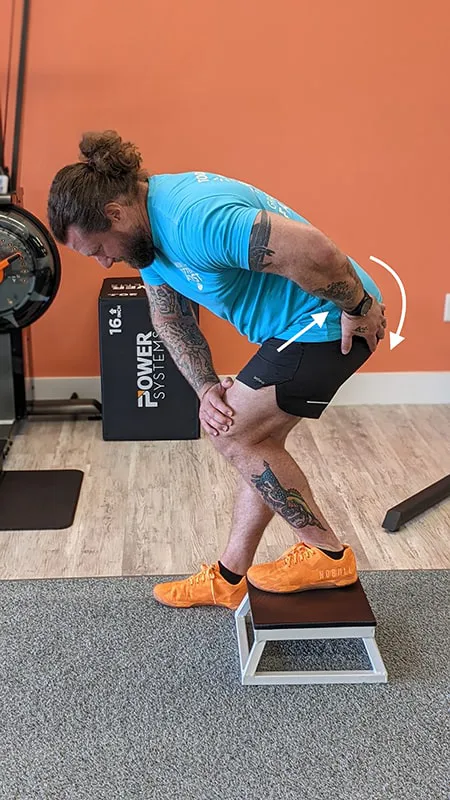
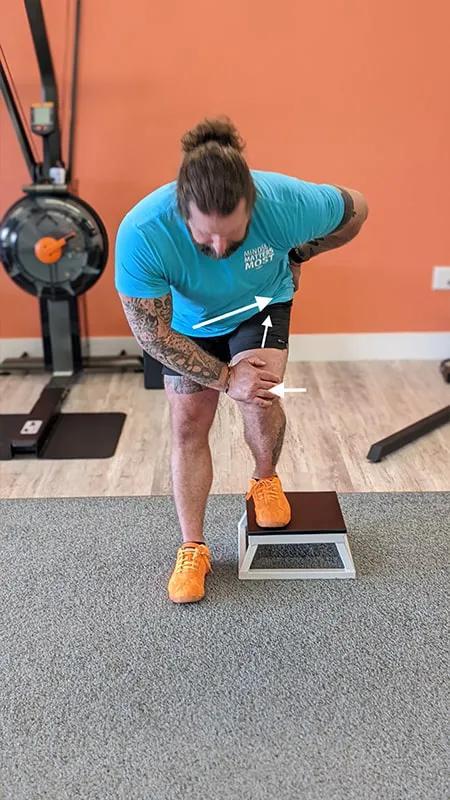
Standing Back-pocket Hip Stretch
- Standing with your feet staggered, place your left foot behind you on a two- to six-inch block or step.
- Shift your left hip back to turn the zipper-line of your pelvis to the left. You should feel a stretch in your back
left hip. - Pull your left knee inward to keep your foot, knee, hip and shoulder all stacked in a straight line. You may feel your left inner thigh muscle activate, which is a good thing.
- Hold this position through five breath cycles.
- Repeat three to five times.
Hope you find these golf stretches helpful, and if you could benefit from unlocking motion and reducing tension for your golf performance, schedule an evaluation with one of our Postural Restoration® trained professionals. Have a great round!
